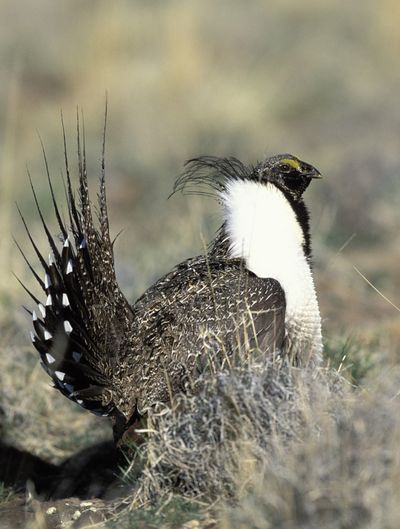Feds funding habitat for sage grouse
Program will secure land in Douglas County

The U.S. Department of Agriculture will pay farmers and ranchers to protect 38,000 acres of sage grouse habitat in Douglas County, which has one of the nation’s last stable populations of the chicken-like birds.
Sage grouse are known for their colorful courtship dances. The males strut around breeding grounds, puffing up air sacks on their chests to attract females.
“They’re a charismatic species,” said Don Larsen, private lands coordinator for the Washington Department of Fish and Wildlife, noting that sage grouse rituals inspired Native American dances. “They’re highly visible and culturally significant.”
About 600 to 700 sage grouse are believed to live in Douglas County, in the center of the state. The birds are a threatened species in Washington state and are candidates for federal protection under the Endangered Species Act.
State biologists worked with USDA officials to get the funds for sage grouse habitat through the State Acres for Wildlife Enhancement program. The program pays landowners to establish or maintain wildlife habitat through 15-year contracts.
Sage grouse need “shrub-steppe” habitat for survival, incorporating tall grasses, sagebrush and native broadleaf plants, Larsen said. Grasses conceal nests from predators, while sagebrush provides food at certain times of the year. Sage grouse chicks get protein from eating bugs on broadleaf plants.
Over the years, Douglas County’s sage grouse population has benefited from land enrolled in the federal Conservation Reserve Program, which pays farmers not to cultivate highly erodible acreage. But contracts on 65,000 acres of CRP land have been expiring over the past two years. Some documented sage grouse nesting areas have gone back into production, Larsen said.
The new funding will help protect important nesting and feeding areas. In addition to sage grouse, “a lot of other species depend on that habitat,” Larsen said.
Sharp-tail grouse, jackrabbits, deer and other songbirds also rely on shrub-steppe habitat.